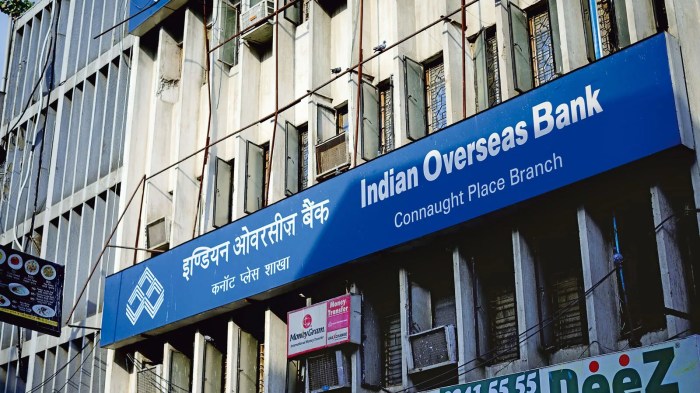Overseas Savings Accounts offer a compelling opportunity to diversify your financial portfolio and potentially earn higher returns. But navigating the world of international banking requires careful consideration of various factors, from account types and tax implications to security concerns and currency exchange rates. This guide provides a comprehensive overview, empowering you to make informed decisions about your global savings strategy.
We’ll explore different account types, such as high-yield savings accounts and offshore accounts, detailing their features, benefits, and associated risks. We’ll also walk you through the process of opening an overseas account, addressing potential challenges and highlighting the importance of understanding relevant tax laws and regulations in different jurisdictions. By the end, you’ll have a clear understanding of how to choose the right account to meet your specific financial goals and risk tolerance.
Types of Overseas Savings Accounts

Choosing the right overseas savings account depends heavily on individual financial goals, risk tolerance, and the specific needs of the account holder. Several distinct account types cater to a range of circumstances, each offering unique features and benefits. Understanding these differences is crucial for making an informed decision.
High-Yield Savings Accounts
High-yield savings accounts offered by international banks often provide higher interest rates compared to domestic options. These accounts typically maintain FDIC or equivalent insurance, offering a degree of protection against bank failure, although the specific insurance limits and coverage may vary depending on the country and bank. However, higher interest rates may not always translate to significantly larger returns due to potential exchange rate fluctuations.
Accessibility can vary, with some accounts requiring more extensive documentation or in-person visits to establish. Fees also vary considerably, with some banks charging monthly maintenance fees or imposing fees for wire transfers or foreign currency conversions. Risk is generally low due to the insured nature of these accounts, making them suitable for those prioritizing capital preservation and moderate growth.
Offshore Savings Accounts
Offshore savings accounts are held in banks located outside an individual’s country of residence. These accounts offer potential tax advantages, depending on the individual’s home country tax laws and the specific jurisdiction where the account is held. It’s crucial to consult with a qualified tax advisor to understand the tax implications before opening such an account. Accessibility can be more complex than domestic accounts, often requiring international travel or reliance on online banking platforms.
Fees may be higher due to the complexities of international banking and potential currency exchange costs. Risk can vary depending on the stability of the chosen jurisdiction and the bank itself. These accounts may be suitable for high-net-worth individuals seeking tax optimization and international diversification but require a higher level of due diligence.
International Bank Accounts
International bank accounts are simply accounts held with a bank that operates in multiple countries. These accounts offer convenience for international transactions, allowing for easy transfers between countries in different currencies. Interest rates, fees, and accessibility will vary significantly based on the specific bank and the account type. Risk levels depend on the bank’s financial stability and the regulatory environment of the countries where the bank operates.
These accounts are a good option for individuals and businesses with frequent international transactions who need a streamlined approach to managing finances across borders.
Global Money Market Accounts, Overseas Savings Accounts
Global money market accounts are similar to high-yield savings accounts but often offer additional features such as check-writing capabilities and potentially higher interest rates, although this is not always guaranteed. These accounts frequently require a higher minimum balance than standard savings accounts. Accessibility and fees are comparable to high-yield savings accounts. Risk is generally low due to the similar regulatory protections found in high-yield accounts.
These accounts cater to those needing a balance between savings and access to funds.
| Account Type | Interest Rate | Fees | Accessibility |
|---|---|---|---|
| High-Yield Savings Account | Variable, generally higher than domestic options | Variable, may include monthly maintenance fees and transfer fees | Variable, online and branch access often available |
| Offshore Savings Account | Variable, can be competitive | Potentially higher due to international transactions and currency conversions | May require international travel or reliance on online banking |
| International Bank Account | Variable, depends on the specific bank and account type | Variable, may include fees for international transfers and currency conversions | Variable, depending on the bank’s global presence |
| Global Money Market Account | Variable, potentially higher than standard savings accounts | Variable, may include higher minimum balance requirements | Similar to high-yield savings accounts |
Successfully navigating the world of overseas savings accounts requires careful planning and a thorough understanding of the associated complexities. From selecting the right account type and managing currency exchange risks to adhering to international tax regulations and prioritizing account security, a proactive and informed approach is crucial. By weighing the potential benefits against the inherent risks and diligently following best practices, you can leverage overseas savings accounts to effectively diversify your financial portfolio and achieve your long-term financial objectives.

